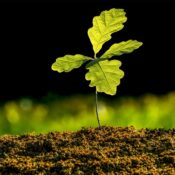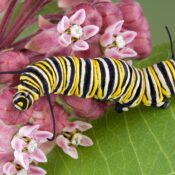By and large, trade between Canada and the U.S. is equally good for both countries. But every so often, an unsanctioned item sneaks through and gums up the works. We’ve sent forest-killing pests like emerald ash borers up north, free of charge, but each winter, they ship tons of cold air down here without asking if we need any. The most recent Canadian export to flood our markets – and schools, homes, and businesses – is smoke.
A low-pressure system over Maine funneled smoke into the U.S. from more than 160 wildfires in Québec, as well as the largest forest fire in Nova Scotia’s history, in early June. Conditions were bad enough to drive 75 million Americans indoors, postponing sports events, and delaying flights at five major airports. Daycares closed, and schools cancelled recess periods.
Fortunately, a return to a more typical northeasterly wind pattern has cleared the heaviest smoke out of the U.S. for the time being. Wildfires continue to burn out of control in Canada, with 13 times as much area scorched as normally burns in an entire summer, but a lot of the smoke is being blown out to sea. Some of it actually just showed up in Norway, where it did not even stop to to register at the border.
We know that inhaling smoke can lead to a range of health problems, from sore throats and red eyes to an increased risk of asthma, strokes, heart attacks, and dementia. Health authorities advise that during wildfire smoke events, we should monitor the air-quality index, limit outdoor activity, and if possible, set up a “clean room” in our home.
Humans can take steps to filter the air we breathe. Plants, on the other hand, are obliged to stand around with their mouths, or stomata, hanging open all day as they vacuum carbon dioxide from the air and give off precious oxygen. And they do this without benefit of a respirator or an N95 mask.
This naturally raises a few concerns. For one thing, we may worry that our favorite hydrangea or rose bush will shrivel after marinating in wildfire fumes. More importantly, we’d like to know if our food crops will be safe to eat, and if so, whether our lettuce, green beans, and broccoli will taste like a campfire for the next little while. According to Steve Reiners, professor of horticulture at Cornell University, the sky may have looked gloomy, but it’s not ready to fall just yet. He assures us that enough light gets through smoke for plants to photosynthesize well, and that airborne particulate matter is too small to clog plant stomata and hinder gas exchange.
Writing for the Cornell College of Agriculture and Life Sciences website on June 9, 2023, Reiners says:
Concerns that leafy greens and other commodities will pick up a smoke flavor are unwarranted. Recent research done in California after wildfires there showed leafy greens had no issues with flavor or possible volatile chemicals on or within the leaves. The smoke we’re seeing does not contain dangerous chemicals.
The smoke we are experiencing is nearly 100% from the burning forests, not plastics, buildings or chemicals as seen in recent train derailments. The rain that falls through this smoky layer is also not dangerous to plants, people or animals. Unlike acid rain that forms from the burning of high sulfur fuels, the rain will be near neutral pH or just slightly acidic.
Fans of smoked Gouda and Gruyère who secretly hoped all cheese will be smoky from cows munching smoked grass will be disappointed, but this is excellent news for the rest of us. In Canada, where cannabis is a legal crop, consumers will have to make peace with the idea of buying pre-smoked pot.
Given that northern latitudes are heating much faster than lower and mid-latitudes, it’s no surprise that the number of acres burned by Canadian wildfires annually is expected to double by 2100. We should not be surprised to have these widespread fires be the norm going forward.
In addition to stocking up on N95 masks and buying an indoor air filtration system, we can help clean the air in our neighborhoods by planting trees. We’re aware that trees take carbon dioxide from the air and store it in trunks and branches, thus helping to mitigate climate change. While that’s important, it’s a slow process.
But trees have an immediate effect on air quality: they remove airborne particles, which are trapped by leaves due to tiny electrical charges on foliage. Particles also get stuck in minute leaf hairs. Plus, trees can neutralize harmful gases in the air. Some of the best smoke-fighting trees are ginkgo (Ginkgo biloba), littleleaf linden (Tilia cordata), London planetree (Platanus × acerifolia), and hackberry (Celtis occidentalis).
Ironically, the smoke-tree or smoke-bush (Cotinus coggygria) does not make the list.
Become a Saturday Evening Post member and enjoy unlimited access. Subscribe now




Comments
Thanks for this report, Paul. Hopefully the recent smoke from the fire(s) in Canada weren’t around long enough to do any real long term harm. Pre-smoked pot sounds weird, but I get what you’re saying. I didn’t know there were trees that can help reverse the damage done by smoke, removing airborne particles and neutralizing harmful gases.